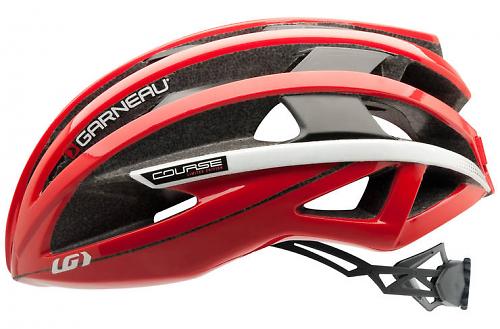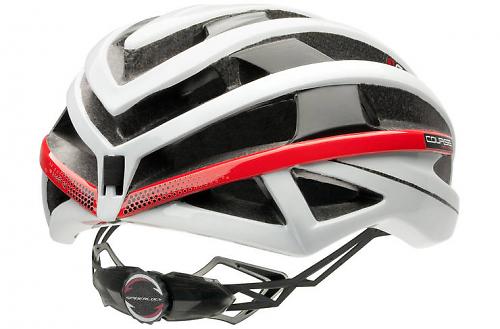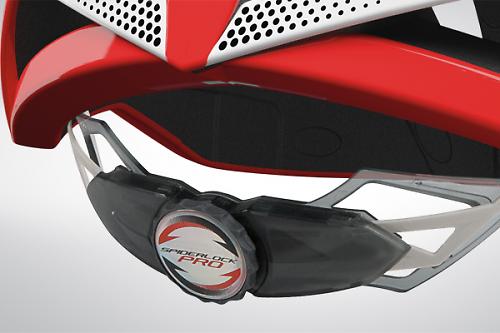- News
- Reviews
- Bikes
- Components
- Bar tape & grips
- Bottom brackets
- Brake & gear cables
- Brake & STI levers
- Brake pads & spares
- Brakes
- Cassettes & freewheels
- Chains
- Chainsets & chainrings
- Derailleurs - front
- Derailleurs - rear
- Forks
- Gear levers & shifters
- Groupsets
- Handlebars & extensions
- Headsets
- Hubs
- Inner tubes
- Pedals
- Quick releases & skewers
- Saddles
- Seatposts
- Stems
- Wheels
- Tyres
- Tubeless valves
- Accessories
- Accessories - misc
- Computer mounts
- Bags
- Bar ends
- Bike bags & cases
- Bottle cages
- Bottles
- Cameras
- Car racks
- Child seats
- Computers
- Glasses
- GPS units
- Helmets
- Lights - front
- Lights - rear
- Lights - sets
- Locks
- Mirrors
- Mudguards
- Racks
- Pumps & CO2 inflators
- Puncture kits
- Reflectives
- Smart watches
- Stands and racks
- Trailers
- Clothing
- Health, fitness and nutrition
- Tools and workshop
- Miscellaneous
- Buyers Guides
- Features
- Forum
- Recommends
- Podcast
TECH NEWS
Louis Garneau show new Course aero helmet at the Tour + video
We’re still discovering newly launched products at the Tour de France, and Louis Garneau have released a new aero road helmet, the Course. It’s their first aero road helmet and it's being worn by Team Europcar. Keep your eyes peeled for Thomas Voeckler when he goes on the attack, and you'll see this new lid.

Unlike other aero helmets like the Specialized Evade, Kask Infinity and Scott Vanish, the designers at Louis Garneau worked to reduce the buildup of frontal pressure by designing vents to channel all the airflow through the helmet, rather than pushing the air around the helmet. They used Computational Fluid Dynamics software, and confirmed the findings in the Canadian National Research Council’s Low Speed Wind Tunnel Facility, to shape the vents in the helmet in a way they reckon passes air through the helmet more quickly.

They say the inside of the helmet has been aerodynamically shaped too, to encourage the air to flow through and out the back. There’s an ‘inner-nerve system’ moulded into the EPS liner that helps to channel the air without restriction, guiding the air to the back of the helmet. There are additional ‘evacuation channels’.
Is the Course aerodynamic then? Louis Garneau claim that the Course is 2:40mins quicker over a 40km route compared to a regular road helmet, and 1:58mins quicker over a competitor's aero road helmet, though it must be pointed out they don’t say which helmets they actually used for the comparative testing. We're really curious aabout that because that's a considerable saving. And the manufacturers of the other aero helmets are all claiming that theirs is the fastest, obviously...
Louis Garneau call this ‘real-life aerodynamics’ because the helmet offers ventilation that most non-professional riders will still seek in a helmet. They say that they wanted to offer improved aerodynamics without sacrificing the issue of heat management and ventilation.

From a safety point of view, Super MSB Technology is a ring-shaped protection belt around the base of the helmet that ensures structural integrity is high in the event of a crash. That ‘inner-nerve’ system also works to distribute shock, and the straps are integrated into it.

The Spiderlock Pro II retention system uses a rotary dial for adjustment, and there’s a neat LED built into it for nighttime visibility. Quick-drying Static XT2 padding lines the helmet.
It’s not the lightest helmet at a claimed weight of 250g, but it’s a reasonable weight. Three sizes will be offered (S,M and  and it costs £159.99.
and it costs £159.99.
David worked on the road.cc tech team from 2012-2020. Previously he was editor of Bikemagic.com and before that staff writer at RCUK. He's a seasoned cyclist of all disciplines, from road to mountain biking, touring to cyclo-cross, he only wishes he had time to ride them all. He's mildly competitive, though he'll never admit it, and is a frequent road racer but is too lazy to do really well. He currently resides in the Cotswolds, and you can now find him over on his own YouTube channel David Arthur - Just Ride Bikes.
Latest Comments
- hawkinspeter 2 sec ago
I find it difficult to believe that people actually believe that Trump will "stick up for them" when he's already demonstrated his narcissism and...
- webbierwrex 13 min 47 sec ago
Support is very important but the main problem in my experience is the inability for cycling shoe manufacturers to make shoes that are foot shaped!...
- whosatthewheel 15 min 9 sec ago
I particularly love the shared use path directional signs clamped to round posts, which kids frequently turn for fun to indicate a wrong direction.
- David9694 25 min 39 sec ago
"Cyclists are permitted to visit Cornwall’s Household Waste and Recycling Centres (HWRCs). For safety reasons, pedestrians are not permitted at the...
- mitsky 41 min 26 sec ago
For anyone who is not a fan of NF (funny how those initials turned out, eh?)......
- Rendel Harris 43 min 33 sec ago
I see. Supplementary question as you clearly know more about it than I do, how do foam inserts work with different pressures, e.g. if they drop the...
- DannyWheels 44 min 3 sec ago
Hi, did this clamp work or did you manage to find something? I have the exact same issue with my Former Flash Road Bike
- Rome73 2 hours 37 min ago
https://thebikeproject.co.uk/ this project in London does the same - if anyone has any unused bikes they would like to donate.
- chrisonabike 12 hours 14 min ago
Pretty sure a lot of that "more space for motor vehicles" was because fewer motor vehicles (also marginally "smaller motor vehicles")....
- thax1 13 hours 39 min ago
Cycliq certainly seemed to let a lot of people down in the early days. I held off until the 12 Sport came out, but have been impressed....








Add new comment
2 comments
i quite like the look of this...but I have a pinhead and it may just look mega mushroom like on my bonce.
Am i the onlye one who sees either you're gunning for people with larger heads or they've introduced a new size....
either you're gunning for people with larger heads or they've introduced a new size....
But it doesn't look that bad for an aero helmet, still proper expensive though.